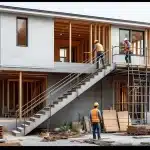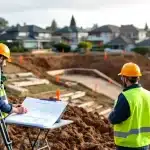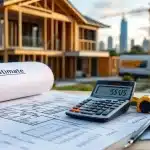How to Renovate Weatherboard Homes in Melbourne
Melbourne’s weatherboard homes represent some of the city’s most charming architecture, but they often need thoughtful updates to meet modern living standards.
We at Cameron Construction have guided hundreds of homeowners through successful weatherboard renovations Melbourne-wide, transforming these classic properties while preserving their character.
The right renovation approach can dramatically improve comfort, energy efficiency, and property value when executed properly.
What Makes Melbourne Weatherboard Homes Unique
Timber Construction Methods You Need to Know
Melbourne’s weatherboard homes built between 1880 and 1990 feature lightweight timber-framed construction with horizontal timber boards that create the external cladding. These homes typically lack adequate wall insulation, with many constructed with Oregon timber frames that become vulnerable to termite damage over time. The lightweight construction makes these properties ideal for extensions, but the timber frames require careful assessment during renovations. Homes built before 1990 need thorough termite inspections, particularly around subfloor areas and external wall frames where moisture accumulates.
Structural Problems That Cost Melbourne Homeowners
Water penetration ranks as the primary structural concern in Melbourne weatherboard homes, with the Real Estate Institute of Australia reporting that moisture-related damage affects approximately 60% of pre-1980 weatherboard properties. Rotted weatherboards, deteriorated window frames, and compromised subfloor structures create expensive repair scenarios that range from A$15,000 to A$40,000 for single-storey homes. Poor insulation leads to condensation problems within wall cavities, while inadequate drainage around foundations causes timber rot in lower wall sections (particularly where gutters overflow or downpipes fail).
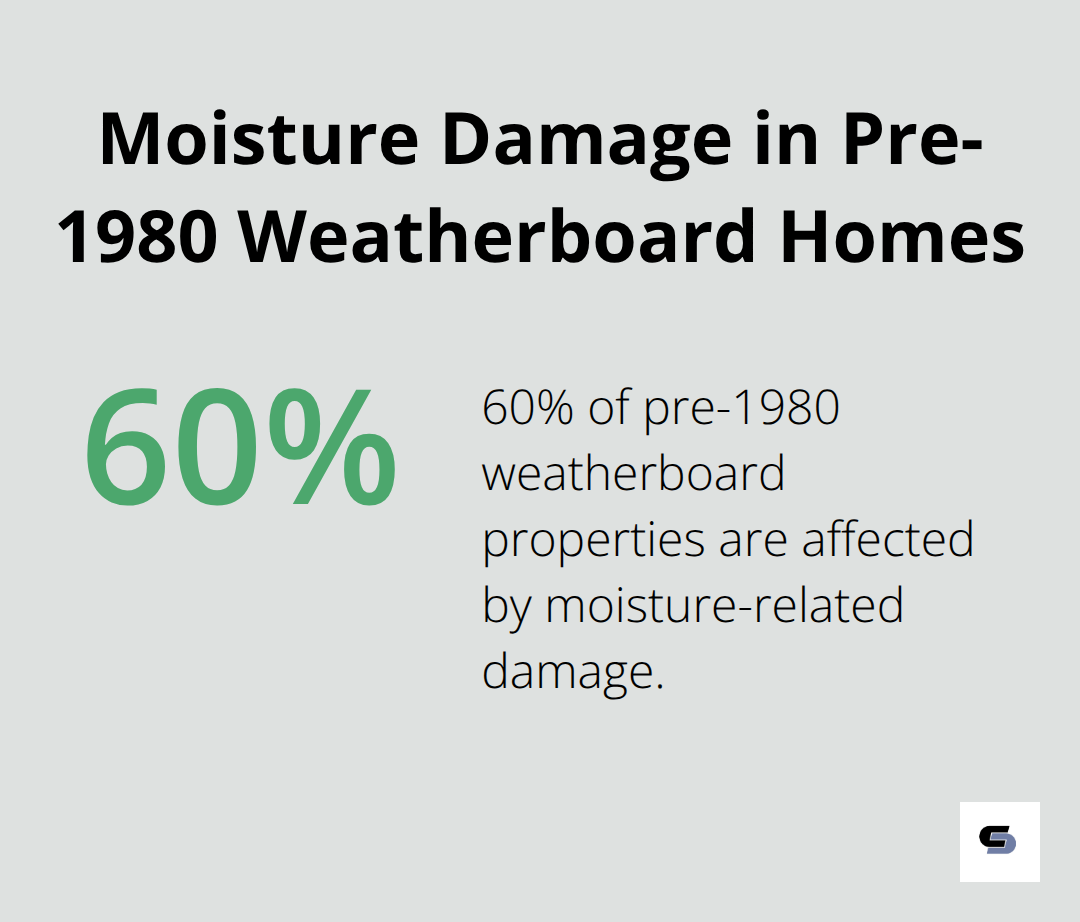
Heritage Restrictions That Impact Your Renovation Plans
Victorian, Edwardian, and Federation-style weatherboard homes often fall under heritage overlays that restrict exterior modifications. Melbourne City Council requires heritage permits for changes to front facades, roof lines, or original window configurations, with approval processes that take varying timeframes. The Australian Institute of Architects recommends that renovations maintain original architectural proportions while allowing subtle contemporary additions. Smart renovation strategies focus on rear extensions and internal modifications that preserve street-facing heritage features while adding modern functionality (which typically face fewer restrictions than front-facing changes).
These unique characteristics directly influence how you should approach your renovation budget and timeline planning.
How Much Should You Budget for Your Weatherboard Renovation
Weatherboard renovation costs in Melbourne range from A$2,000 to A$5,000 per square metre, but smart planning keeps your project within the lower end of this spectrum. We recommend you allocate A$20,000 to A$30,000 for kitchen renovations, A$15,000 to A$30,000 for bathroom updates, and A$40,000 to A$80,000 for complete timber frame replacement if structural damage exists. The Real Estate Institute of Australia shows that well-executed weatherboard renovations increase property values by 10-20%, which makes the investment worthwhile when you manage it correctly.
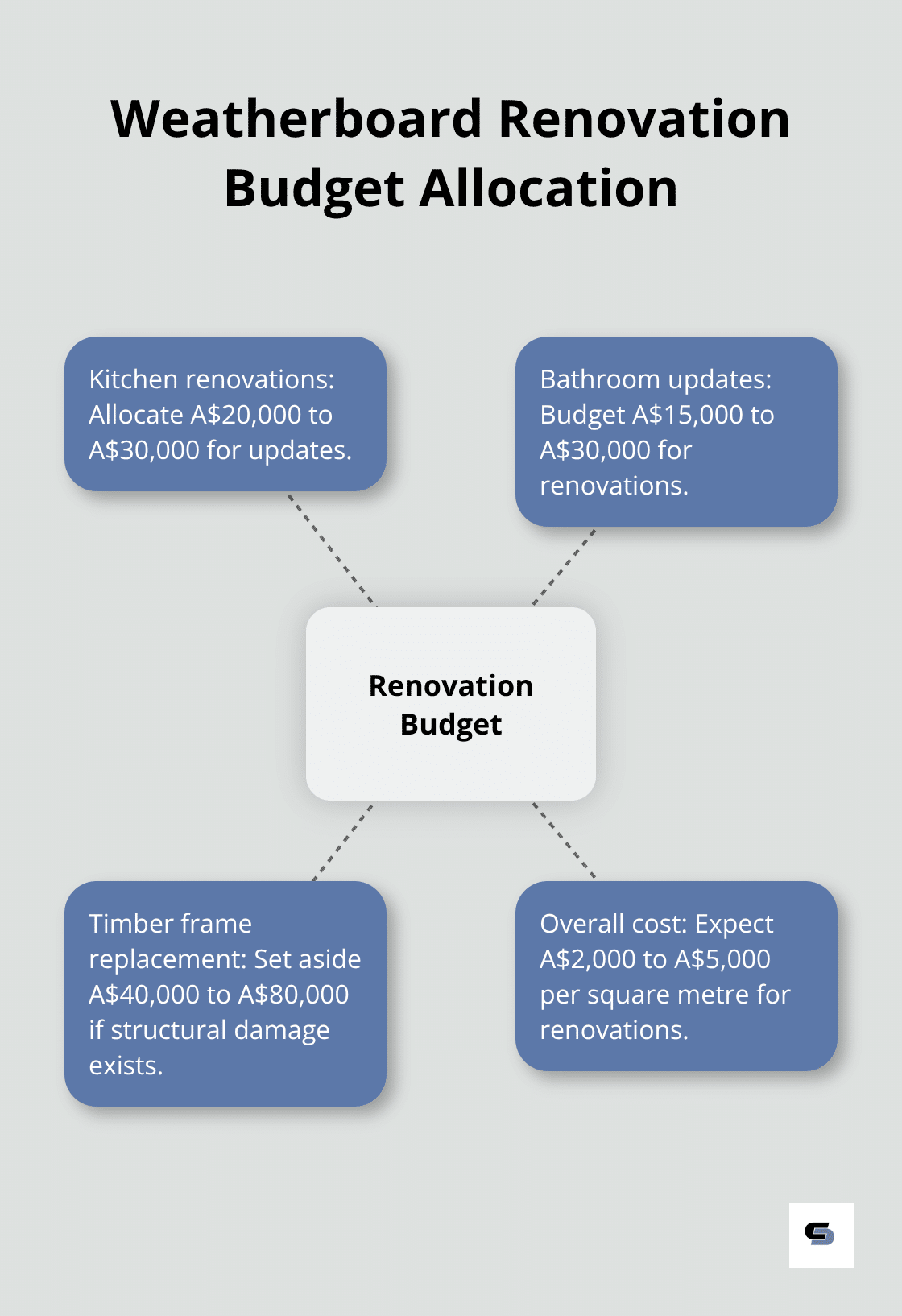
Melbourne Council Permits and Timeline Requirements
Melbourne City Council permit applications for weatherboard homes require detailed plans and additional information about the proposal, so start this process before you finalise contractor agreements. Building consent costs between A$5,000 to A$10,000, and heritage permits add another 6-8 weeks for properties under heritage overlays. Schedule timber inspections immediately after you remove existing cladding, as hidden damage often requires additional time and budget adjustments.
Smart Contingency Planning for Hidden Issues
Maintain a 15-20% contingency fund for unexpected issues like asbestos removal or termite damage, which can add A$5,000 to A$15,000 to your total costs. Unforeseen problems during renovations (such as plumbing complications or structural weaknesses) frequently emerge once work begins. Labour costs for skilled tradespeople range from A$50 to A$150 per hour depending on experience and location, with Melbourne rates typically at the higher end of this scale.
Restoration vs Full Replacement Decision Framework
Full weatherboard replacement makes financial sense when more than 40% of existing boards show rot, warping, or pest damage. Restoration works best for homes with isolated damage areas and solid underlying timber frames. Consider energy efficiency upgrades during any renovation approach, as proper insulation installation can save up to 45 per cent on heating and cooling costs (making it a smart long-term investment). James Hardie Linea weatherboards offer superior durability over traditional timber options, with resistance to warping and cracking that reduces long-term maintenance costs significantly.
These budget considerations directly impact which renovation techniques you should prioritise for maximum value and structural integrity.
What Are the Most Effective Weatherboard Renovation Methods
Weatherboard Cladding Replacement That Actually Works
Replace weatherboard cladding when more than 30% of boards show visible rot, warping, or pest damage rather than attempt piecemeal repairs that fail within two years. James Hardie Scyon™ Linea™ Weatherboard offers superior weather protection and refined design for lasting elegance, providing better performance than traditional timber options. Remove existing cladding completely to inspect timber frames, as moisture damage typically extends 200-300mm beyond visible surface problems. Install building wrap or house wrap before new cladding to prevent condensation issues that cause 80% of premature weatherboard failures. Use stainless steel fixings spaced at 450mm centres rather than galvanised nails that corrode and loosen within five years.
Insulation Upgrades That Cut Energy Bills in Half
Install bulk insulation in wall cavities when you replace cladding, as this represents your only cost-effective opportunity to access these areas. Wall insulation costs approximately A$2,210 for average Melbourne weatherboard homes but reduces heating and cooling costs by up to 40% when you insulate your existing walls and ceiling during renovation. Choose insulation products under 90mm thickness to prevent compression that reduces thermal performance by 60%. Add ceiling insulation at R3.5 minimum (costing around A$3,070) and floor insulation at R2.5 (approximately A$2,440) to create comprehensive thermal barriers. Draught-proof all gaps around windows, doors, and weatherboard joints with polyurethane sealants, as air leakage accounts for 25-30% of energy loss in unsealed weatherboard homes.
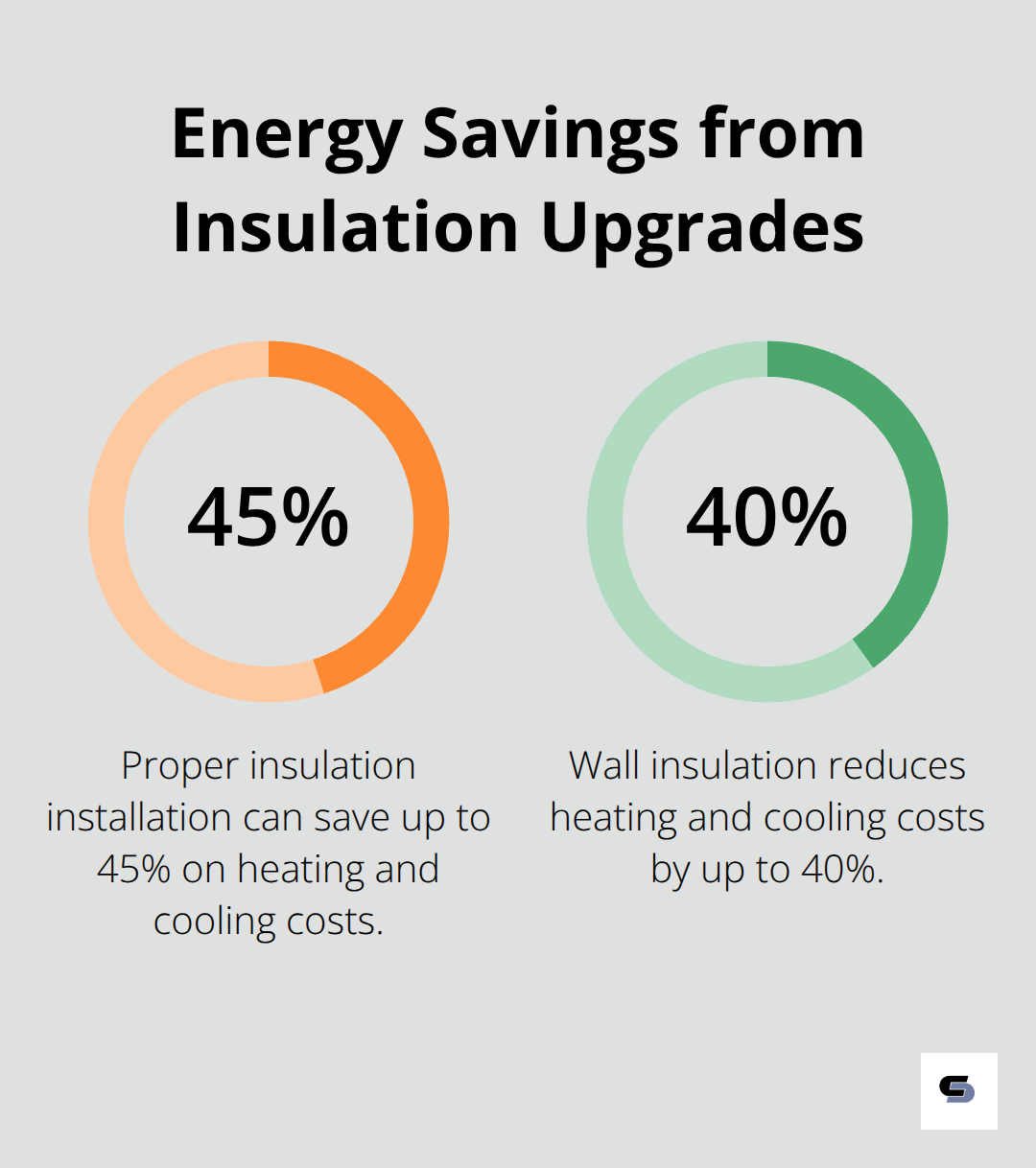
Electrical and Plumbing System Modernisation
Rewire weatherboard homes built before 1990 completely rather than patch old systems that fail safety inspections and insurance requirements. Install additional power points in each room (minimum eight outlets per living area) and upgrade to 20-amp circuits for modern appliances that older 10-amp systems cannot handle safely. Replace galvanised steel plumbing with copper or PEX systems when you renovate walls, as blocked galvanised pipes cause water pressure drops of 40-60% and frequent burst pipe emergencies. Install dedicated circuits for high-power appliances like induction cooktops and heat pumps that draw 32-40 amps when they operate. Upgrade switchboards to include safety switches and surge protection that prevent 90% of electrical fire incidents in renovated weatherboard properties.
Final Thoughts
Successful weatherboard renovations Melbourne homeowners complete require three fundamental elements: thorough structural assessment, proper budget allocation with 15-20% contingency funds, and compliance with heritage regulations. Properties that receive comprehensive insulation upgrades, quality cladding replacement, and modern electrical systems typically see 10-20% value increases according to the Real Estate Institute of Australia. The financial returns justify the investment when you prioritise high-impact improvements like thermal performance upgrades that reduce energy costs by 40% and structural repairs that prevent costly future damage.
Quality renovations yield up to 150% return on investment in Melbourne’s competitive property market. Professional structural assessment and permit applications take 4-12 weeks for approval, so start these processes early in your project timeline. Smart homeowners focus on comprehensive solutions rather than piecemeal repairs that create ongoing maintenance issues.
We at Cameron Construction bring decades of experience to weatherboard renovation projects across Melbourne. Our team provides transparent communication and detailed quotes that eliminate renovation surprises (while maintaining the architectural character that makes these homes special). Contact Cameron Construction today to discuss your weatherboard renovation project and receive professional guidance tailored to your specific property needs.


